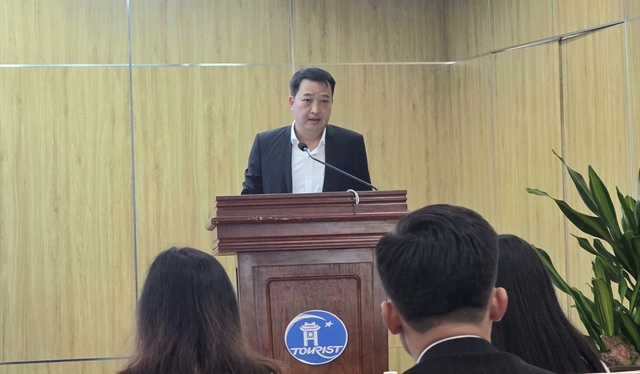Seafood exporters set for good year
Seafood exporters set for good year
Seafood exports in the second half of the year are expected to rise by 11 per cent to US$4.46 billion, according to the Viet Nam Association of Seafood Producers and Exporters (Vasep).

Speaking at a Vasep plenary meeting in HCM City yesterday, its general secretary Truong Dinh Hoe said exports had shown good signs of growth in the first half and are expected to top $8 billion for the year, he said.
Shrimp shipments alone are expected to be worth $3.5 billion, a year-on-year increase of 12 per cent, he said.
Shrimp exports to China and the United States would remain very strong thanks to high demand there while exports to the EU and Japan would remain steady, he said.
Tra fish exports are expected to be worth $952 million in the second half, an increase of 3 per cent year-on-year, with shipments to China expected to grow by 50-60 per cent while the United States and EU would reduce their buying by 10-15 per cent and 5 per cent, respectively, he said.
Jiro Takeuchi of Bonmea GmbH said he sees an opportunity in Europe for small-d and certified shrimp.
There is an increase in demand for ASC (Aquaculture Stewardship Council) certified shrimp, he said.
Le Van Quang, chairman of Minh Phu Seafood Group, a large shrimp exporter, said there is a shortage of small-d shrimps for processing, especially for Europe.
Shrimp farmers have enjoyed a good year in 2017, particularly those applying the “three clean” breeding model, he said.
Many farms have yielded very large shrimps weighing 15 to the kilogramme.
Large-d shrimp would be abundant next year and their price would fall, he said.
He suggested that farmers should not harvest in one lot, but instead divide their crop into three or four lots.
This way, the first harvest would be done when the shrimp are 50 days old (80 shrimps/kilogramme), the second at 55-60 days (65-70 shrimps), the third at 80 days (35-40 shrimps) and the fourth at 100 days (15-20 shrimps).
“[This] will offer higher efficiency.”
The association said the fisheries sector faces many challenges, including inconsistency in output and quality of inputs and trade barriers in importing markets.
Hoe said to overcome these challenges and continue to develop businesses need to keep abreast of market information and change tack to meet market demands.
Agro-fishery-forestry export fetches $23.7b in 8 months
Viet Nam’s agro, forestry and fishery export turnover experienced a year-on-year increase of 13.5 per cent to $23.66 billion in the first eight months of this year.
Exports reached an estimated $3.1 billion in August alone, according to the Ministry of Agriculture and Rural Development.
During the eight-month period, export value of main farming products was estimated to hit $12.6 billion, surging 17.2 per cent against the same period last year.
Rubber saw the highest growth in both export volume and value. Some 795,000 tonnes of rubber were shipped abroad for nearly $1.36 billion, up 11.2 per cent in volume and 52 per cent in value year-on-year.
Rice exports also grew in the first eight months, earning $1.75 billion with 3.96 million tonnes, yearly rises of 17.5 per cent in value and 20 per cent in volume. China remained the largest market for Vietnamese rice, accounting for 41 per cent of total export volume.
Exports of fruit and vegetables also surged 46.5 per cent to $2.32 billion with China, Japan, the United States and South Korea among the top importers of Vietnamese fruit and vegetables.
However, exports of other agricultural goods such as coffee and cashew nuts recorded quantity reductions despite quality increases.
Coffee shipments in the period reached 1.02 million tonnes for export value of $2.33 billion, up 3 per cent in value but down 20 per cent in volume while cashew nut exports dropped by 1.1 per cent in volume to 223,000 tonnes while surging by nearly 25 per cent in value to $2.2 billion.
In the first eight months, seafood exports brought home turnover of $5.13 billion, up 18.1 per cent year-on-year. The largest importers of Vietnamese seafood products included the United States, Japan, China and South Korea, which accounted for 55.6 per cent of total exports.
Meanwhile, forestry products saw a turnover increase of 9.6 per cent to $5.07 billion.
The ministry also reported that the nation imported an estimated $2.69 billion worth of agro-forestry-aquatic products in August, pushing the eight-month figure to $19.17 billion, up 23 per cent over same period last year.




















